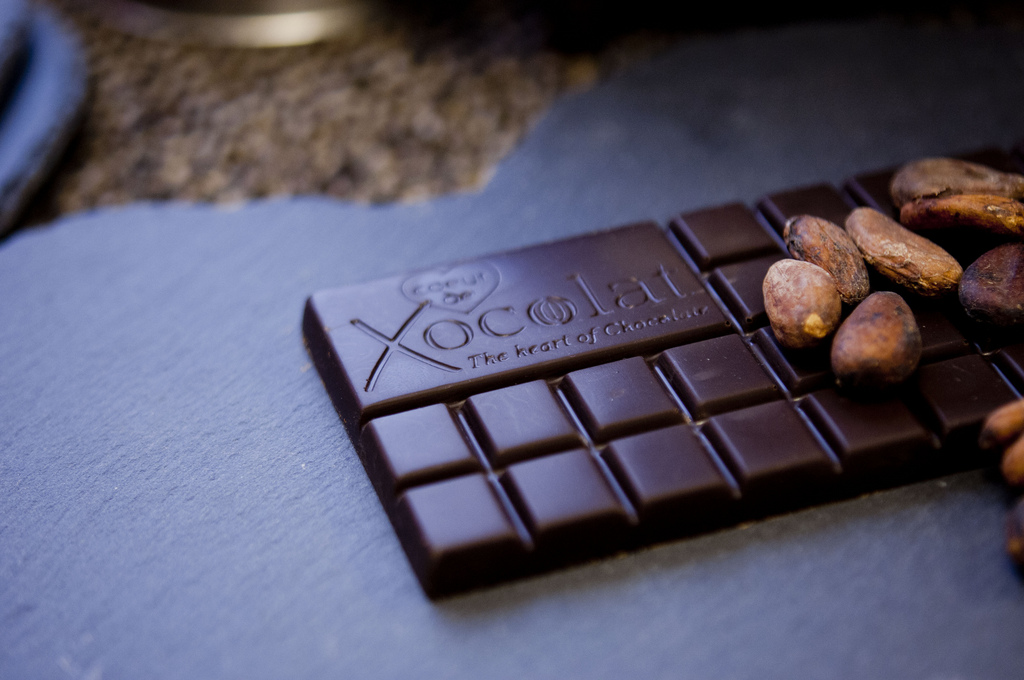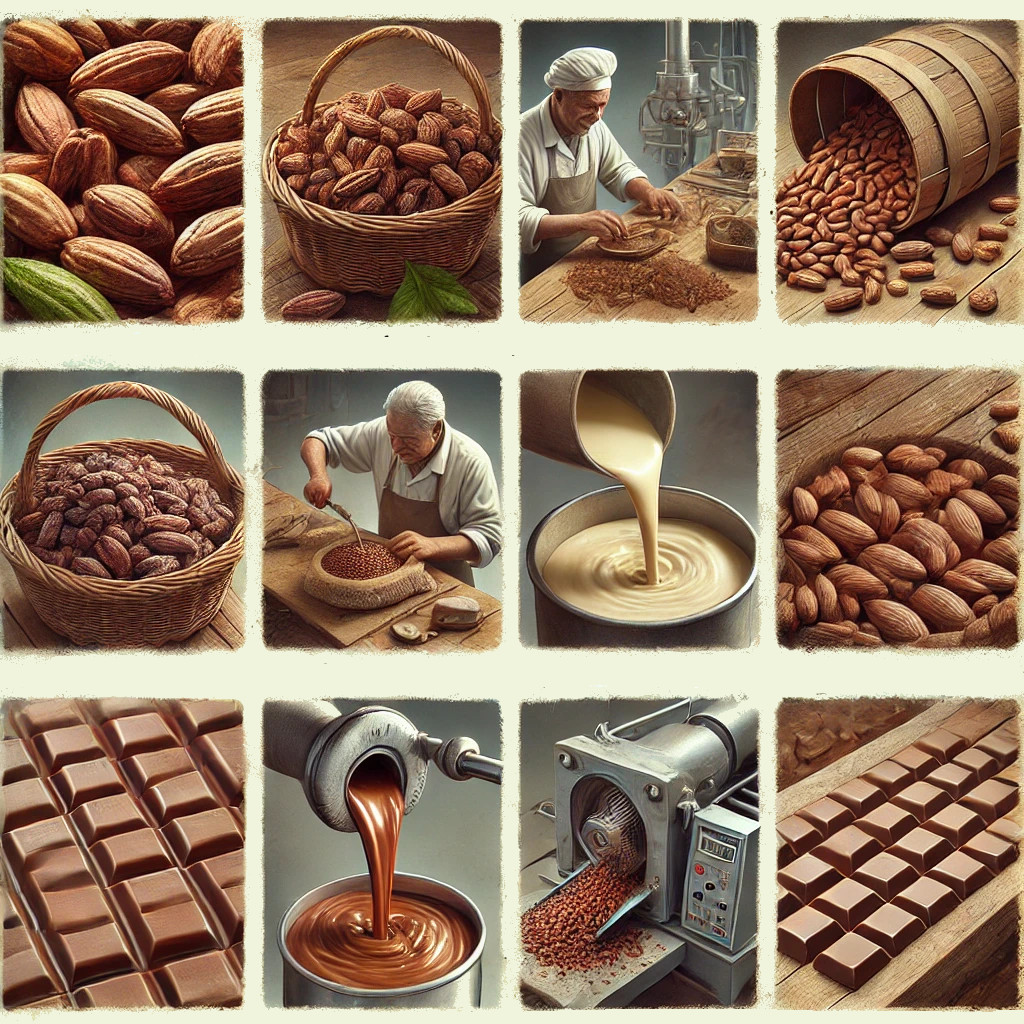If you're keen to make your own craft chocolate from scratch, one of the first questions you'll probably ask is: how much chocolate can you actually get from cocoa beans? 
The answer depends on several factors, like the type of cocoa beans you use, how you process them, and the kind of chocolate you're aiming to create.
In this guide, we’ll take you through the chocolate-making process, the yields you can expect, and provide some helpful tips for beginners looking to make high-quality, handmade chocolate.
1.From Cocoa Beans to Cocoa Mass (Liquor)
To kick off the chocolate-making journey, you first need to extract cocoa mass (also called cocoa liquor) from the raw cocoa beans.
Weight of cocoa beans: On average, a single cocoa bean weighs around 1.2g. To produce 100g of cocoa mass, you'll need about 400-500 cocoa beans.
Yield from cocoa beans: If you start with 1kg of raw cocoa beans, you can expect a yield of approximately 450g-500g of cocoa mass, depending on your extraction process.
This cocoa mass is the heart of your chocolate. Once you have it, the next steps involve refining, conching, and mixing to turn it into the final product.
2. Processing the Cocoa Mass
After extracting your cocoa mass, it’s time to refine and process it into the smooth, velvety chocolate that you’ll enjoy. This involves several key steps:
Refining: This breaks down the cocoa particles to create a smoother texture.
Conching: The process of continuously mixing and aerating the chocolate, which helps develop its flavour and improves texture.
Mixing with other ingredients:
For dark chocolate, you’ll mix cocoa mass with sugar and cocoa butter.
For milk chocolate, you'll add milk powder, sugar, and cocoa butter.
For white chocolate, it’s just cocoa butter and sugar—no cocoa mass involved.
At this stage, your choice of chocolate type will affect what ingredients you add. The rest of the process will depend on whether you're making dark, milk, or white chocolate.
3. Conversion to Final Chocolate Products
Once you have your refined cocoa mass, it’s time to transform it into finished chocolate. The yield you get depends on the type of chocolate you're making:
Dark chocolate (70% cocoa): A 100g bar of dark chocolate typically contains around 70% cocoa, so from 100g of cocoa mass, you’ll end up with roughly 100g of finished chocolate (after adjusting for sugar and cocoa butter).
Milk chocolate: The cocoa content is lower in milk chocolate, usually around 30-40%. From 100g of cocoa mass, you'll probably end up with 80-90g of finished milk chocolate, depending on how much milk powder and sugar you add.
Note: When making chocolate with a lower cocoa percentage, you'll get less finished product since the added ingredients (like milk powder and sugar) take up more of the total weight.
4. Cocoa Butter: What Happens to It?
As you process cocoa beans into cocoa mass, you can separate out the cocoa butter. This key ingredient gives chocolate its smooth texture and glossy finish.
Yield of cocoa butter: Roughly 50-55% of the weight of cocoa beans is cocoa butter. You can use it to create creamier chocolate, make white chocolate, or even for other purposes like cosmetics.
The amount of cocoa butter varies depending on the type of chocolate you want to make. Dark chocolate generally has less cocoa butter than milk or white chocolate, making it firmer.
A Quick Example: What to Expect from 1kg of Cocoa Beans
Let’s put everything into perspective. Here’s what you can expect if you start with 1kg of cocoa beans:
 Cocoa mass yield: From 1kg of raw cocoa beans, you'll typically get about 450g–500g of cocoa mass.
Cocoa mass yield: From 1kg of raw cocoa beans, you'll typically get about 450g–500g of cocoa mass.
Dark chocolate (70%): Using your 450g of cocoa mass, you can expect to produce around 450g of 70% dark chocolate (after adjusting for sugar and cocoa butter).
Milk chocolate: With milk chocolate, the final weight will be slightly lower because of the milk powder and sugar added. You could expect about 400g of finished milk chocolate.
Bean-to-Bar Chocolate Yields
So when making craft chocolate from cocoa beans, you’re looking at a yield of roughly 45-50% of cocoa mass from the raw beans. From there, you’ll refine it into finished chocolate.
The total amount of chocolate produced will depend on the type of chocolate you want to create. But with the right equipment and techniques, you'll be well on your way to crafting high-quality, delicious chocolate from the bean!
Craft Chocolate Tips for Beginners
Choose your beans carefully: Different beans have different flavour profiles. Experiment with single-origin beans to discover the taste that resonates with you.
Refining and conching are key: These steps make a huge difference in the texture and flavour of your chocolate. Invest in the right equipment for the best results.
Patience pays off: Bean-to-bar chocolate-making is a slow process, but the rewards are worth it. Take your time and enjoy the journey.
If you're just starting out on your bean-to-bar adventure, don't be afraid to experiment and fine-tune your process. Remember: the most important ingredient is your passion for creating exceptional craft chocolate!
